



Major Expansion for Cobb's Research Facility in Kentucky
The Kentucky R&D facility is growing to secure genetic progress and supply customer demand, according to the latest Cobb Focus.The Cobb pedigree breeding operation in the small rural community of Monticello, Kentucky, started out as a new Avian Farms facility in 1991. Cobb purchased Avian's assets in 2000, and now the Monticello complex has been upgraded and the capacity almost doubled.
The operation has prospered in a region relatively isolated from other poultry companies and enjoys high productivity from a low turnover, long-serving, closeknit team of around 200 people.
Management capitalised on the close-knit team work and embarked on an internal communications programme to demonstrate to employees more about the company's business, and equally the importance and contribution of each of their roles to the overall success.
Presentation and discussion sessions, involving groups of 10 to 15 employees at a time, complemented each other and enabled them to make suggestions as to how they could improve their interaction and daily productivity. The six-month programme is recognised as an important step in the continued success of the Kentucky complex.
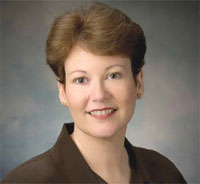
The first stage in the activities is at the Strawberry Hill pedigree farm, tucked on top of a hill about 1000 feet (307 metres) above sea level. The farm is well buffered from other outside activities and focused on producing pedigree birds as the source of genetic potential for the company’s downstream, commercial products.
Adam Eastgate is the complex manager with eight managers reporting to him. Lonnie Hancock is responsible for hatchery and brooding. Josh Bennett oversees trap nests and layers.
Chris Holtzclaw runs the production crew, house clean-out and maintenance. He also has Justin Underwood, grow-out supervisor, reporting to him.
Dennis Troxell is the genetic selection analyst, responsible for the selection crew. Jim Cason manages pedigree mating and ultrasound. Jeremy Hutchison manages the feed conversion crew.
Angela Ferguson completes the team as human resources employment manager. Strawberry Hill is supported by on-site data analyst, Theresa Slagle, who reports to the geneticist, Manouchehr Katanbaf.
Lorrie West is the human resources/safety manager for the Kentucky region.
Adam manages the people and facilities that house several pedigree lines to produce eggs for the on-site multi-stage hatchery and to satisfy the selection program for the on-going pedigree improvements. The remaining eggs are transported to Blairsville hatchery in Georgia to produce great grandparents, which in turn produce eggs for hatching commercial grandparent and parent stock products.
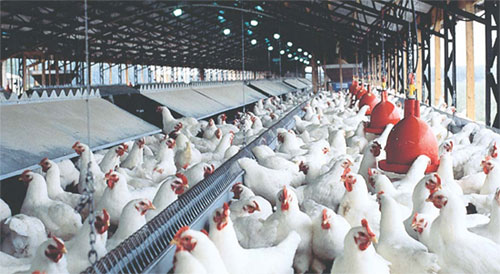
Eggs at Strawberry Hill are all collected by hand from trap nests, which retain the hen after lay and so allow individual egg identification to a specific source and history of genetic performance. Egg handling and sanitation are critical at the start of the breeding process where each individual pedigree female is highly valued and can be the ‘seed’ for about three million broilers for customers.
Strawberry Hill farm has numerous chicken houses dedicated to the different stages of production. Houses for pedigree flocks, flocks in lay, placement and brooding of day-old chicks and the grow-out phase all run east to west to optimise internal temperature control. These houses are subject to a 19-day clean-out, wash and disinfection programme, involving laboratory testing to ensure hygiene standards are met before a new flock is placed. Biosecurity is a major emphasis, with strict shower, clothing and footwear procedures required for all personnel on the farm.
* "Our goal is to produce day one parent breeders that exceed customer expectations" |
Selection is an important function in the entire programme covering over 50 broiler and breeder traits. Selection pressures have to be met, and the required number of birds identified and retained to meet genetic goals and point-of-lay targets. The well trained crews were recently divided into sub-teams to focus on bird selection by source flock to monitor and improve selector’s consistency and trait heritability.
Data are recorded on each bird after a period of full feed (or 'broilerisation') to expose defects early and improve selections for good health and performance. Selected birds then enter feed conversion testing before beginning a new phase of managed bodyweight to get flocks ready for production.

Throughout the various phases on the R&D farm, there is an over-riding emphasis on attention to detail. Great care is exercised in managing the behaviour and performance differences between lines, grading day-old chicks at hatch and selecting birds in response to multiple criteria. The challenge is to manage flocks after the broilerisation period on into the grow and production phases, where different age birds will be combined into a ‘single generation’ flock, as well as introducing different aged males to female groups in the trap house, maintaining production and adhering to biosecurity procedures.
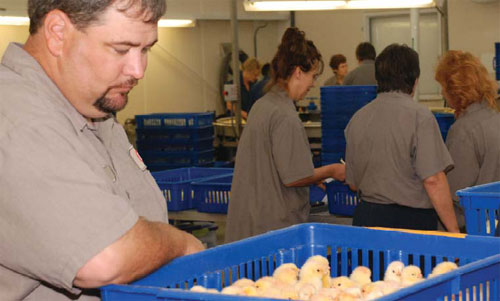
“At the pedigree farm, the programme strives to provide a good broiler growing environment for birds from different pure lines to express their true genetic potential. Birds are then selected from data collected on these different traits. Getting birds to express their genetic potential, collecting accurate data and then managing them to reproduce well as breeders is key to a successful, sustainable breeding programme at Cobb,” explains Manouchehr Katanbaf, geneticist at Monticello.
“We are in the business of making genetic progress on a bird by bird basis on the pedigree farm and then passing it down to our products. How well we do that as a team, in a safe and a biosecure environment, will set us a part from our competition.”
The parent hatchery at Monticello has a dedicated team led by manager DeWayne Hardwick with over 17 years’ experience, supported by assistant manager Chris Skeens, Brian Garrett, maintenance supervisor and Carol Luttrell in a recently created management support role. Working closely with production planning and in cooperation with the other eight Cobb hatcheries, they are tasked over the four hatch-days per week to produce quality, day-old parent chicks. DeWayne comments, “Our goal is to produce day one parent breeders that will exceed customer expectations while in turn putting Cobb values at the fore front.”
* "Good communication, feed quality and regular flock testing ensure a consistently high quality product for the customer" |
There needs to be on-time delivery and good early livability to satisfy US and Canadian customers. Adjusting for seasonal changes in temperature and humidity are a constant challenge to management. Dealing with these temperature variations requires continual adjustments and keeps the hatchery team on their toes. DeWayne posts seven- and 14-day mortalities reported by customers to ensure the feedback and communication of the chick performance is a focal point of the whole hatchery team.
Early integration of the hatchery into Cobb from the previous Avian ownership was well supported with improvements in compensation, benefits and investment in the hatchery. DeWayne comments, “We were a little different than the other hatcheries ventilation-wise. By relying solely on evaporative cooling, it challenged us to be a little more creative to achieve and maintain optimum results.”
The team was recognized with Cobb Hatchery of the Year Awards in 2003, 2005 and 2008. The hatchery is extremely proud of their greatest achievement and award given in 2007, when they became the first Cobb hatchery to obtain the excellent performance of a 0.5 per cent annual 14-day mortality average on eight million Cobb500 chicks placed with customers.
Alongside the performance progress, the hatchery embarked on several recycling projects aimed at reducing production of waste materials and limiting the use of resources. All batteries and fluorescent bulbs used have, for example, reduced wattage and material content to last longer and be fully recyclable.
Pump-spray delivery instead of aerosol cans are used in cleaning or sanitation in the hatchery. Pallets are all metal and fully recyclable compared to more traditional materials. Water savings are achieved at several levels. Showers are electronically set with timers and constant temperature levels to reduce energy and water usage. Evaporative coolers have volume meters to record water usage. This recording is deducted from the monthly waste water volume going to the waste water treatment plant.
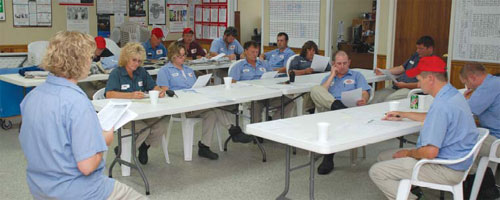
Water flow is also blocked in the drains during the weekly clean of rooftop evaporative coolers, also reducing the volume used and providing a resource saving to the company.
Cody Polley leads the production team responsible for managing the grandparent flocks spread over about 40 contract farms and supplying fertile eggs to the Monticello hatchery. He has over 10 years’ experience in the company, five as a pullet and breeder manager on an R&D farm in Missouri and another five years as complex manager on two different R&D facilities within Cobb.
The goals are the same on each of the three facilities with which he has been associated. They effectively manage the birds in rearing and the laying phase, ensuring accurate data collection and instilling good communication within the service technicians, bird handling teams and growers in order to optimise production performance.
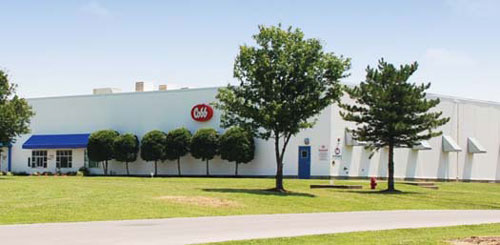
Cody feels that a lot of intuition goes into handling and managing the birds at each level, mainly gained from on-the-job experience. The production group focuses its efforts on getting the grandparents to perform like breeders and produce a quality egg pack for the hatchery.
This involves a lot of trust and direction built up over time with his service technicians and with the growers involved in managing pullet or laying flocks. He says the most important task is good communication between the grower and the service technician, while maintaining awareness of feed quality and regularly testing flock health status through the company veterinarian and laboratory.
The three functions that make up the Kentucky complex have their own primary goals to ensure their role in achieving a high quality, consistent product for the customer.
Performance has benefited from recognition of the importance of communication by all Monticello team members as well as the management. They understand their role in the business too – all combining to create a harmony that bodes well for future success of the complex.
November 2009








